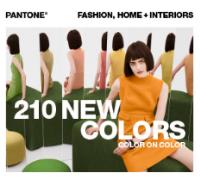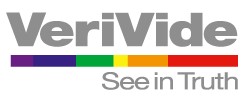 Add My Company
Add My Company
Sign In
Pantone FAQ’S
18-10-2018

Have you got a Pantone related question? We may have answered it here on our blog, which is updated when customers ask a question that we think would be good to share.
If your question hasn't been answered, simply drop an email to pantone@enquiries.com or call +44 (0)116 284 7790 and we will be happy to answer!
1. What does Pantone numbering system mean?
The Pantone Fashion, Home + Interior system uses a numbering system based on the position of the colour in LCH colour space, therefore, each colour is assigned a six-digit number which defines its position in the 3d colour space. Each pair of digits has a specific meaning: the first pair of digits refers to the lightness or darkness of the colour on a scale between 11 (lightest) and 19 (darkest). The second pair of digits specifies the hue on a scale between 01 and 65 going around the hue circle, where approximately 10 is yellow, 15 is orange, 20 is red, 30 is purple, 40 is blue, 50 is blue/green and 60 is green. The third pair of digits describes the chroma level of the colour on a scale of 00 for a neutral to 64 for the brightest colour.
In the Pantone Graphics PMS system the majority of the colours are referred to using a three- or four-digit number followed by a C or U. There are also a small number of named colours, such as the 18 base colours like PANTONE Reflex Blue or PANTONE Orange 021 which are named after the pigment which Pantone are replicating.
Metallic colours are 3 or 4 digit numbers beginning with an 8, Premium Metallic colours are 5 digit numbers beginning with 10 and Pastel & Neon colours are 3 or 4 digit numbers beginning with 8 or 9.
The letter suffix refers to the paper stock on which it is printed: a "C" for coated or gloss paper or a "U" for uncoated paper. Metallic and Premium metallic colours are only available on coated paper.
2. How can I find the closest Pantone colour when I have CMYK/RGB/HTML/L*a*b* values?
Pantone does not provide a defined cross-reference between colour data and solid Pantone colours, however, you can use Adobe Photoshop to enter the values and cross-reference to Pantone Libraries. Photoshop will default to the closest mathematical colour. The steps to do this are as follows:
From the main toolbar, click the foreground/background colour square to launch the Adobe Colour Picker
Type the desired values into the text boxes provided. Note the change in colour on the picker window.
Click the Colour Libraries button
Select your desired Pantone library from the droplist
Photoshop will display a range of seven colours, with one colour outlined with a black border. This is the default colour which is closest to the values entered
It is important to note that the above results are mathematical, and are also dependent upon the colour settings used in Photoshop. Results should always be compared to a current Pantone guide or book to ensure accurate colour.
3. How can I update Adobe Photoshop and similar design programmes with new Pantone colours?
Each time you purchase a new Pantone book you are entitled to a free download of Pantone Color Manager software which provides RGB and HTML values for over 11,000 Pantone colours from all of the Pantone Libraries.
Each Pantone Guide has a registration code on the cover and each larger book has a registration insert, simply follow the registration link and record when and where your purchase came from then enter the 16 string alphanumeric registration code.
Once the download is complete the data can be exported to QuarkXPress®, Corel® and Adobe® Creative Suite® design programs.
4. Can I purchase a fabric swatch for all Pantone numbers?
No, fabric swatches are only available for colours in the Pantone Fashion & Home range where the numbers have 6 digits and are suffixed TCX e.g. 11-0601 TCX or are suffixed TN e.g. 16-2150 TN.
All of the other Pantone ranges are produced on printed paper.
To purchase fabric swatches (and cut down variations of these) see the swatch ordering page of our website.
5. We have received the Pantone swatches, and several of these have the words ‘revised standard’ on them. Can you explain what this means…have they changed the colour?
Revised Standard means that the dye recipe has changed since the colour was first established; it may not have been recently. The recipes of some colours were changed to make them more reproducible in the real world so that there were not problems achieving the colour in the factories where the fabric is dyed.
It does not mean that the actual colour has changed as the revised recipe is formulated to match the original for colour under D65, however the swatches are marked up to alert you to the possibility that the colour may be slightly different under another light source.
6. If I buy a fabric swatch will it be the same as my supplier overseas?
Yes, any dyed cotton production for SMART swatches and the other cotton products occurs in one dyehouse in New Jersey, USA and the quality control is very strict, colours have to match the original standard to a delta E measurement of 0.5 which is hardly noticeable when visual matching and also has to be on the same side of the standard in chroma, hue and lightness as all previous production of that colour.
7. Do the Cotton books contain Fluorescent colours?
No, Cotton cannot be dyed with fluorescent dyes. To supply fluorescent trend colours Pantone developed the Nylon Fluorescent Swatch ring which contains 21 super bright colours - brighter than can be achieved on Cotton. The colours are dyed on Nylon 6,6 to optimise lightfastness and washfastness. Of the 21 colours, 14 contain flavine or rhodamine acid dyestuff which qualifies them as true fluorescents in that they absorb ultraviolet light and emit it as visible light which increases the perceived brightness of the colour. Additional fluorescent colours will be available soon.
8. I only need one colour – do I need to buy a whole book?
No, If you require a Fashion & Home Cotton or Nylon colour it is possible to purchase individual fabric swatches and we hold stock of all 2331 colours in the range, we also sell Replacement Pages for all of the Graphics Solid Chip books and also the Fashion & Home TPX & TPG Color Specifier books and so you only need to purchase one page. The pages have seven colours and each is represented by six postage stamp sized tear out chips. To purchase please email pantone@verivide.com
9. Can I buy Plastic Chips for specifying the colour of plastic components, toys, homeware etc?
Yes, Plastic Standard Chips are available for all of the Graphics PMS coated colours and also the Fashion & Home TCX colours. As there are thousands of colours we do not hold stock in the UK but we are happy to order and import them for you from Pantone with a lead time of approx 7-10 days.
10. Is everything in your online shop a stock item?
No, we try to hold at least one of each of Pantone Graphics and Pantone Fashion & Home books in stock (more of the popular items) ready for despatch the same day if your order is completed before 1.30pm but we cannot guarantee stock of all of the Munsell items or the Pantone Plastics. We will order any out of stock items from Pantone the same day and usually receive these within 10 days.
11. What does TPX stand for?
TPX is the old suffix for the textile colours on paper, it has now been replaced by TPG, the 2100 colours in the TPX range prior to the change to TPG have been retained in the TPG book and are approximately the same as in the TPX book but the TPG book has another 210 colours that were not previously available in TPX format.
12. What does TPG stand for?
TPG is Textile Paper Green. The suffix changed from TPX to TPG because Pantone had to prove to the EU governments that they had removed banned chemicals from the coating process. All lead pigments and chromium have been removed to ensure compliance with environmental requirements.
13. Do TPX/TPG colours match TCX?
The colours in the TPX/TPG books are developed to be the closest possible visual match to Pantone Cotton TCX colours under D65 Daylight lighting. They cannot be guaranteed to match under other light sources due to the difference in chemistry of dye on fibre to ink on paper giving a potential metameric effect.
In practice, around 80% of textile paper colour chips are a good match to the cotton standards with the darker and more saturated colours - scarlet, dark red, navy, bottle green etc not matching so well as it is difficult to build up sufficient depth of colour on the paper.
Please note applying the same colour to different materials may cause different colour appearances due to surface construction, reflectance and other variables.
When producing soft and hard goods in the same range we recommend that the soft goods are matched to cotton TCX SMART swatch standards and the hard goods to Pantone Plastic Chip standards which replicate the cotton TCX colours on large Polypropylene chips.
14. Who comes up with the Pantone colour names?
We did a whole blog on this, 'Pantone colour names – where do they come from?'
We hope you found this blog helpful, if so you may find our other blog, 'Pantone FAQs for Interior Design' useful too!
15. Are Pantone Colours sustainable?
The newest 210 cotton colours in the Pantone Fashion & Home range were developed in conjunction with Huntsman Textile Effects using Huntsman's AVITERA® SE range of dyes. AVITERA® SE provides significant economic benefits and improved environmental footprint: reducing water and energy consumption by over 50% and cutting CO2 emissions by up to 50% during the dyeing process.
In addition, all lead pigments and chromium have been removed from the Pantone Fashion & Home paper range to ensure compliance with environmental laws.
16. How many colours are there available in total with Pantone?
For the Fashion, Home and Interiors (FHI) industry there are currently 2,331 SMART colour swatches. 2,310 are cotton swatches and the remaining 21 are nylon swatches, we are expecting some new colours soon so this number will increase.
For the graphics and print industry, the Pantone Formula Guides currently include 1,867 PMS colours. The Pantone Graphics range also includes 154 Pastels, 56 Neons, 301 Metallics and 300 Premium Metallics colours so the Graphics range in total has 2678 PMS colours as well as 2,868 CMYK process colours which do not relate to the PMS colours.
There are also the Plastic Chips to consider, you can request all of the Cotton swatch colours as well as all of Graphics PMS colour range as Plastic Standard Chips so it is possible to choose from 4988 colours in the Plastic chips. N.B. the less often requested colours may have a longer lead time while they are formulated.
For more information on Pantone FAQ’S talk to VeriVide
Enquire Now
List your company on FindTheNeedle.
